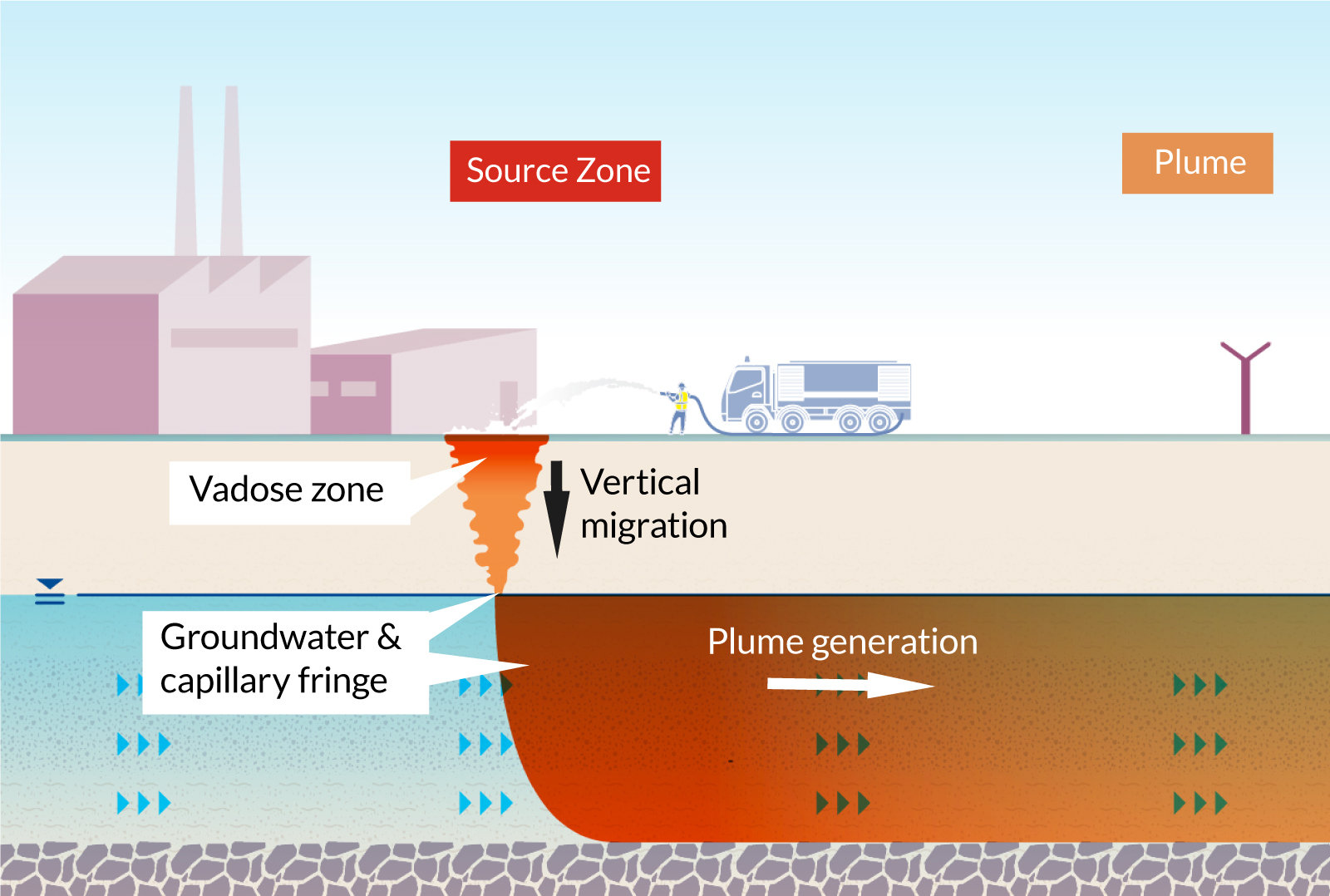Effective PFAS Waste Management in Industrial Environments
Innovative PFAS Treatment Solutions for Safer Water
The boosting occurrence of PFAS contamination in water materials necessitates an important examination of cutting-edge treatment options. In addition, emerging bioremediation strategies supply an even more sustainable approach to taking on PFAS challenges. pfas management.
Review of PFAS Contamination
PFAS contamination has emerged as a substantial environmental and public health and wellness problem. Per- and polyfluoroalkyl substances (PFAS) are a group of artificial chemicals understood for their perseverance in the environment and body, leading them to be frequently described as "for life chemicals." These substances have been widely utilized in different markets, consisting of firefighting foams, water-repellent fabrics, and food product packaging, primarily as a result of their water- and grease-resistant properties.
The widespread usage of PFAS has led to their detection in soil, water products, and also in the blood of human beings and pets. Studies have linked PFAS exposure to various health and wellness issues, including developing impacts in babies, immune system disorder, and various types of cancer cells. Additionally, the ecological persistence of these substances complicates their destruction and removal, elevating worries regarding long-term environmental influences.
Governing bodies are increasingly implementing rigid standards to keep an eye on and reduce PFAS levels in drinking water and other ecological tools. As awareness of PFAS contamination expands, it has come to be imperative for communities and markets to seek efficient treatment solutions to minimize direct exposure and guard public wellness.
Advanced Filtration Technologies
As the urgency to attend to PFAS contamination magnifies, progressed purification innovations have actually become an essential component in the removal initiatives focused on eliminating these relentless chemicals from water sources. These technologies utilize sophisticated mechanisms to properly target and capture PFAS compounds, which are notoriously immune to traditional treatment techniques.
One of the most promising strategies is the usage of granular turned on carbon (GAC), which adsorbs PFAS particles due to its high surface and porous structure. This approach has been extensively applied in both municipal and commercial setups, showing substantial reductions in PFAS concentrations. Furthermore, ion exchange materials have actually gained traction, particularly created to selectively bind PFAS ions from water, thus promoting their elimination.
Membrane layer filtering innovations, such as reverse osmosis and nanofiltration, additionally reveal effectiveness in PFAS elimination by literally dividing contaminants from water - pfas management. These systems can achieve high degrees of purity, making them appropriate for drinking water applications
Chemical Therapy Technologies
Various chemical treatment innovations are being checked out to successfully deal with PFAS contamination in water supplies. One promising approach entails making use of advanced oxidation processes (AOPs), which make use of effective oxidants such as ozone, hydrogen peroxide, or chlorine dioxide incorporated with UV light to damage down PFAS substances into less hazardous compounds. This method has shown efficiency in research laboratory setups, showing potential for scalability in real-world applications.
An additional cutting-edge method is the advancement of ion-exchange resins especially created to target PFAS. These resins can selectively adsorb PFAS substances from water, permitting for their removal during therapy processes. Recent innovations have actually improved the efficiency and ability of these resins, making them a favorable alternative for water treatment facilities.
In addition, researchers are investigating the usage of chemical agents like persulfate and ferrous ions to improve the deterioration of PFAS in contaminated water. These representatives can induce chain reaction that assist in the break down of relentless PFAS compounds.
Emerging Bioremediation Methods
Recent innovations in chemical treatment technologies have led the method for exploring bioremediation strategies as a feasible option for resolving PFAS contamination. Bioremediation uses the all-natural metabolic procedures of bacteria to degrade or change pollutants, making it an appealing approach for taking on consistent contaminants like check out here PFAS.
Emerging strategies in bioremediation include using genetically crafted microorganisms that can particularly target and damage down PFAS substances. These microbial strains are being established for their boosted degradation abilities, boosting the efficiency of the remediation process. Furthermore, scientists are investigating the capacity of plant-assisted bioremediation, where specific plant varieties might uptake and sequester PFAS from contaminated dirt and water.
An additional promising method is the application of bioaugmentation, which entails presenting advantageous bacteria right into infected settings to boost the deterioration of PFAS. This approach can promote faster remediation timelines and improve general efficiency.

Regulative Structures and Requirements
A thorough governing structure is essential for efficiently managing PFAS contamination and guaranteeing public health and wellness security. The boosting recognition of per- and polyfluoroalkyl compounds (PFAS) as toxic wastes has prompted various government and state firms to create criteria that control their existence in water materials. The U.S. Epa (EPA) has established health advisories and is pursuing establishing enforceable restrictions for PFAS in alcohol consumption water.
State-level guidelines differ dramatically, with some states taking on more stringent standards than those suggested by the EPA. These guidelines often include maximum pollutant degrees (MCLs) for specific PFAS compounds, tracking needs, and reporting commitments for water utilities. Furthermore, you could check here emerging structures focus on the remediation of infected sites, highlighting the demand for reliable treatment technologies.

Conclusion
In final thought, the advancement and execution of cutting-edge PFAS therapy services are vital for resolving the prevalent problem of water contamination. Advanced filtering innovations, chemical treatments, and arising bioremediation strategies collectively offer a diverse method to properly minimize and deteriorate PFAS degrees. As regulative original site structures remain to evolve, incorporating these technologies will certainly be vital to safeguard public wellness and restore the honesty of infected water sources, inevitably adding to a cleaner and more secure environment.